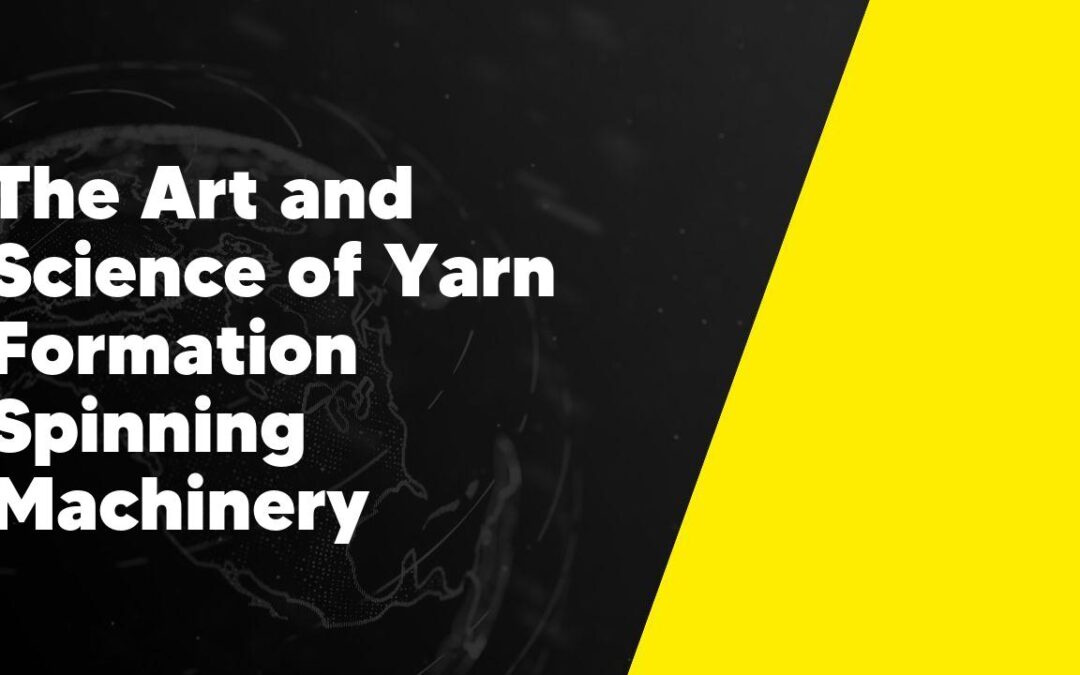In the world of textile manufacturing, the process of yarn formation is a critical aspect. It is the foundation upon which the entire production process hinges. This article explores the art and science behind yarn formation, delving into the intricate machinery and techniques used to create this fundamental textile component.
1. Introduction to Yarn Formation: Understanding the Basics
Yarn formation is an essential process in the textile industry, and it is crucial to understand the basics of this technique. As a textile professional, I have always been fascinated by the intricacies involved in creating yarn. Yarn formation refers to the process of turning fibers into continuous strands that can be further used in the production of fabrics, clothing, and various other textile products. It involves various steps such as carding, combing, drafting, and spinning. Each of these steps plays a vital role in achieving the desired quality and characteristics of the final yarn. In this article, we will delve deeper into the world of yarn formation, exploring the different methods, fibers used, and factors that influence the overall process.
2. The Role of Spinning Machinery in Yarn Formation

As a spinning machinery operator, I play a crucial role in the process of yarn formation. The intricate and highly efficient machines that I work with transform raw fibers into yarns that are strong, uniform, and of high quality. These machines have various components and functions, each contributing to the production of yarn. From the opening and cleaning of the raw fibers to the blending and drawing of the fibers into a sliver, every step in the spinning process is meticulously controlled and adjusted by me. Finally, the sliver is spun into yarn and wound onto bobbins, ready to be used in a myriad of textile products. Being responsible for operating and maintaining these spinning machines requires precision, attention to detail, and a deep understanding of the entire yarn production process.
3. Types of Spinning Machines: A Comparative Analysis
In this section, I will discuss the different types of spinning machines that are commonly used in the textile industry. There are several types of spinning machines available, each with its own unique features and capabilities. One of the most common types is the ring spinning machine, which is known for its high productivity and versatility. It is suitable for spinning various types of fibers and produces yarns that are strong and of high quality. Another popular type is the open-end spinning machine, which is known for its speed and efficiency. It is widely used for spinning coarse and medium counts of yarn. Lastly, there are also rotor spinning machines, which are known for their ability to produce yarns that are highly suitable for knitting. Overall, the choice of spinning machine depends on the specific requirements and goals of the textile manufacturer.
4. Design and Operation of Spinning Machinery: Key Considerations
When it comes to the design and operation of spinning machinery, there are several key considerations that need to be taken into account. Firstly, the efficiency and productivity of the machinery should be a top priority. This means ensuring that the spinning process is carried out smoothly and without any disruptions. Additionally, the safety of the operators should be a major concern. Spinning machinery can be dangerous if not operated correctly, so it is crucial to have proper safety measures in place. Along with this, the maintenance and upkeep of the machinery should also be given proper attention to ensure its longevity and optimal functioning. Overall, a well-designed and properly operated spinning machinery can significantly contribute to the success and profitability of any spinning mill or factory.
5. Advances in Yarn Formation Technology: Industry Trends and Innovations
In my opinion, one of the key advancements in yarn formation technology is the development of 3D printing techniques for yarn production. This innovation has revolutionized the industry by allowing for the creation of intricate and customizable yarn designs. With 3D printing, manufacturers can now produce yarn with complex patterns, textures, and even integrated functionalities. This technology not only enhances the aesthetic appeal of yarn but also expands its potential applications in various industries, such as fashion, textiles, and even healthcare. Furthermore, 3D printing allows for the production of yarn on-demand, reducing waste and increasing efficiency in the manufacturing process. Overall, this advancement in yarn formation technology opens up a world of possibilities for designers, creators, and manufacturers, pushing the boundaries of what is possible in the world of yarn.
6. Challenges and Solutions in Yarn Formation: Overcoming Limitations of Spinning Machinery
In my experience as a textile engineer, one of the biggest challenges I have faced in yarn formation is the limitations of spinning machinery. Traditional spinning machines are often unable to produce yarns with the desired level of strength and uniformity. This can lead to various issues such as reduced fabric quality and increased garment defects. However, over time, we have found solutions to overcome these limitations. One solution is to modify the existing spinning machines to improve their performance and capabilities. Another solution is to invest in more advanced spinning technologies such as rotor spinning or air-jet spinning, which can produce yarns of superior quality. By continuously pushing the boundaries of spinning machinery, we can ensure the production of high-quality yarns that meet the demands of the textile industry.
Conclusion
In conclusion, yarn formation is a complex process that combines both art and science. It involves the use of spinning machinery to transform fiber into the desired yarn. Understanding the various factors that influence yarn formation is crucial for achieving high-quality and durable yarns.
Can you explain what yarn formation is?
Yarn formation refers to the process of transforming fibers into a continuous strand of yarn. This involves various techniques such as spinning, twisting, and drafting.
What is spinning machinery?
Spinning machinery refers to the equipment used to spin fibers into yarn. It typically includes machines such as spinning frames, spinning mules, and ring spinning machines.
What is the role of twisting in yarn formation?
Twisting plays a crucial role in yarn formation as it helps to increase the strength, stability, and cohesion of the yarn. It involves twisting the fibers together to create a single strand of yarn.
What is drafting in yarn formation?
Drafting is the process of lengthening and thinning the fibers during yarn formation. It helps to align the fibers parallel to each other, making the yarn more even and consistent in thickness.
What are the factors that affect yarn formation?
There are various factors that can affect yarn formation, including the type of fibers used, the spinning technique employed, the twist level, and the drafting process. These factors can impact the quality and properties of the resulting yarn.
Why is yarn formation considered both an art and a science?
Yarn formation combines both artistic skills and scientific knowledge. It requires an understanding of the properties of different fibers, the mechanics of spinning machinery, and the techniques to achieve the desired yarn quality. At the same time, it also involves creativity and craftsmanship in achieving unique yarn textures and appearances.

